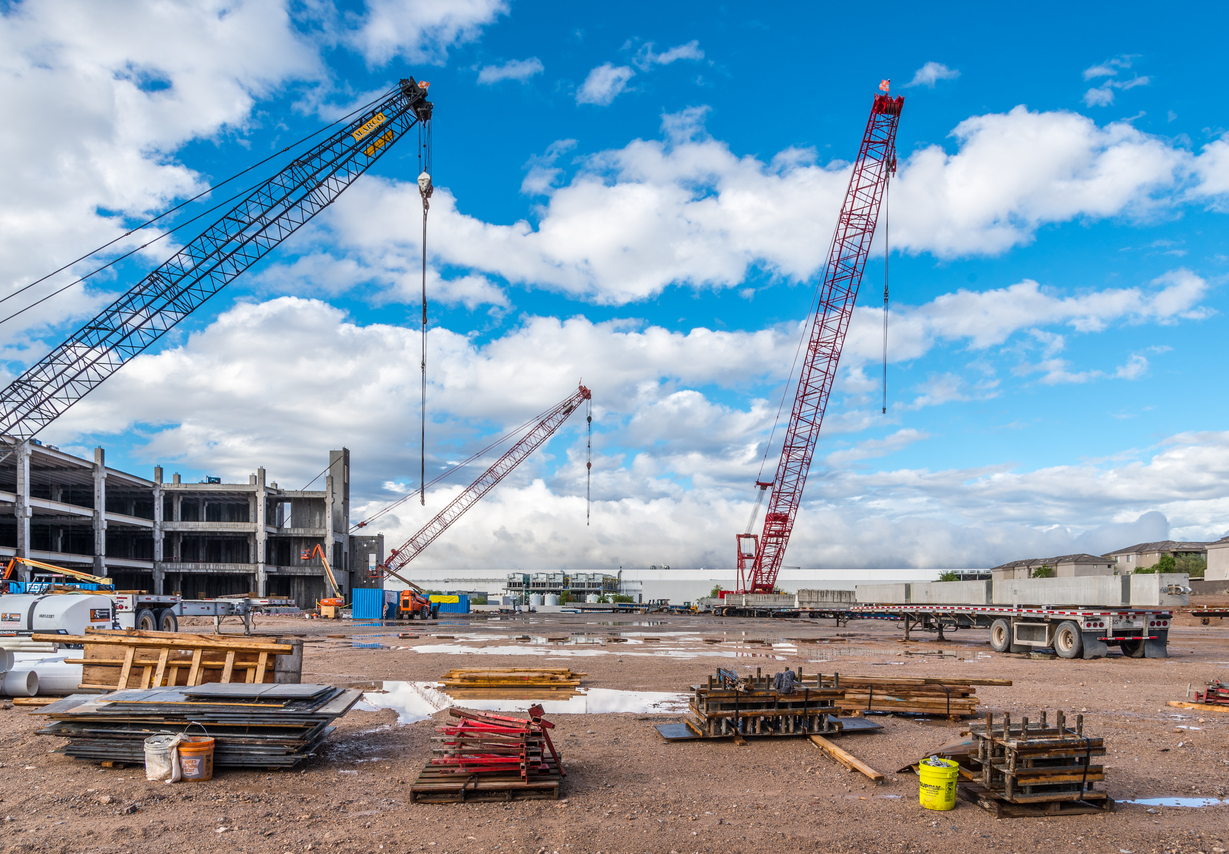Arizona construction costs increased dramatically over the past few years, fueled by several converging factors. Arizona has been on a rapid growth trajectory, becoming one of the hottest markets for commercial real estate in the U.S. However, this boom comes with its own set of challenges, particularly for developers and investors dealing with the rising costs of construction. One area that’s seeing significant impact is the grey shell build-out, a common stage in commercial property development where a building is constructed to a basic, unfinished state, allowing tenants to customize their spaces.
As Arizona continues to grow, so does the complexity of budgeting for grey shell buildouts, leaving property owners, developers, and tenants grappling with how to manage these escalating expenses. Here’s a closer look at the current landscape, the factors driving these costs, and what it means for the future of commercial development in Arizona
Understanding Grey Shell Buildouts
Grey shell spaces, also known as “cold shell” or “bare shell”, refer to commercial buildings that are delivered in a partially completed state. They typically include structural elements like exterior walls, roofing, and essential infrastructure such as plumbing and electrical connections, but they lack finished interiors. This approach allows tenants the flexibility to design and build out their space according to their specific needs.
While grey shell buildouts provide a good level of customization for tenants, the initial construction costs can be substantial. Developers typically bear the upfront expense of bringing the building to this point, and tenants then invest further in completing their space. The overall cost-effectiveness of this process, however, is being increasingly challenged by the recent surge in Arizona construction costs.

The Arizona Construction Costs Surge: What’s Behind It?
Arizona construction costs increased dramatically over the past few years, fueled by several converging factors:
Supply Chain Disruptions: Ongoing supply chain issues, initially sparked by the the past few years, have persisted longer than much anticipated. Delays in materials, higher shipping costs, and unpredictable lead times have made budgeting for construction projects a moving target.
Labor Shortages: The construction industry in Arizona, like many other cities, faces a significant labor shortage. With fewer skilled workers available, labor costs have spiked as contractors struggle to meet demand. This has added another layer of unpredictability to project timelines and budgets.
Rising Material Costs: Prices for key construction materials, such as steel, concrete, and lumber, have increased as well. For grey shell projects, where large quantities of these materials are used in the basic structural build-out, these increases can have a profound impact on overall costs.
Increased Demand for Commercial Space: Arizona’s booming commercial real estate market means that demand for new office, retail, and industrial spaces remains strong. However, this demand has put further pressure on contractors and suppliers, leading to increased competition for limited resources and driving prices higher.
How Grey Shell Buildouts are Impacting Budgets
Grey shell buildouts, once a predictable component of commercial development, are now a significant variable in project budgets. The escalating costs are affecting both developers and tenants in several ways:
Budget Overruns: Developers are finding it difficult to keep projects within budget. What was initially planned as a cost-effective way to deliver space has turned into a financial juggling act as expenses outpace initial estimates.
Delayed Timelines: The unpredictable nature of Arizona construction costs is causing delays in project completion. Developers who are unable to secure materials on time or at reasonable prices may find themselves pushing deadlines, which can, in turn, impact lease agreements and revenue projections.
Increased Tenant Costs: For tenants, the cost to finish out a grey shell space has also increased. Tenants are now facing higher expenses to complete their interiors, which can affect their overall business budgets and, in some cases, delay their occupancy or force them to scale back on design plans.
Navigating the New Cost Landscape
Detailed Budget Planning: With Arizona construction costs so volatile, detailed and dynamic budgeting is important. This includes building contingencies for potential cost increases and regularly reviewing project budgets against market conditions.
Flexible Project Timelines: Flexibility in timelines can help mitigate some of the risks associated with cost surges. Developers who can afford to wait for prices to stabilize, even slightly, may find some relief.
Stronger Vendor Relationships: Building strong relationships with suppliers and contractors can provide developers with more advantages when negotiating prices and securing materials. Early ordering and locking in prices where possible can also help control costs.
Tenant Communication and Collaboration: Open communication with prospective tenants about the realities of the market can help set expectations and foster collaboration on finding cost-effective solutions for interior buildouts.
Looking Ahead
Arizona’s construction cost surge shows no immediate signs of diminishing, and it’s clear that grey shell buildouts are at the heart of the challenge. As developers and tenants navigate this new landscape, creativity, flexibility, and strategic planning will be key to managing budgets and keeping projects on track. While the market may be tough, the continued demand for commercial space in Arizona suggests that there’s still plenty of opportunity for those who can adapt to the evolving cost environment.
If you are interested in learning more about the commercial real estate market, feel free to reach out to us at ICRE Investment Team anytime. We’d be happy to help supply you with information on any relevant properties or markets, alongside any connections in lending, investing, brokerage service or consulting that you might need!
















